Neptunium-Properties And Applications
Neptunium (Np) is a chemical element with the atomic number 93. It is a radioactive metal that belongs to the actinide series of elements. It was discovered in 1940 by Edwin McMillan and Philip Abelson.
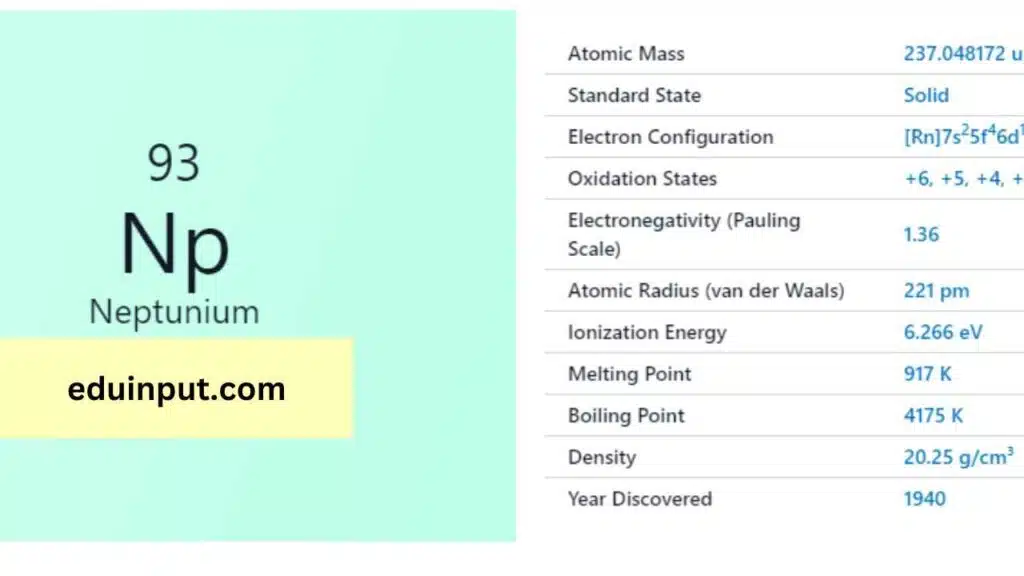
| Property | Value |
| Name | Neptunium |
| Symbol | Np |
| Atomic number | 93 |
| Relative atomic mass (Ar) | (longest lived isotope) |
| Standard state | Solid at 298 K |
| Appearance | Silvery metallic |
| Classification | Metallic |
| Period in the periodic table | |
| Group name | Actinoid |
| Period in periodic table | 7 (actinoid) |
| Block in periodic table | f |
| Shell structure | 2.8.18.32.22.9.2 |
| CAS Registry | 7439-99-8 |
Physical Properties
Neptunium is a silvery metal that tarnishes when exposed to air. It has a melting point of 640 °C and a boiling point of 3902 °C. It is a very dense metal, with a density of 20.45 g/cm3.
Chemical Properties
Neptunium is a highly reactive metal that readily forms compounds with other elements. It can exist in several oxidation states, including +3, +4, +5, +6, and +7. The most stable oxidation state is +4, which forms neptunium dioxide (NpO2). Neptunium is a radioactive element that undergoes radioactive decay.
Electronic Configuration of Neptunium
Neptunium (Np), with 93 electrons, follows the Aufbau principle for orbital filling. While expected to fill the 5f subshell first, a slight energy level difference causes one electron to occupy the 6d subshell instead. This results in the complete electron configuration: 1s²2s²2p⁶3s²3p⁶4s²3d¹⁰4p⁶5s²4d¹⁰5f⁴6d¹7s².
Electronic Configuration of Neptunium via Bohr Model
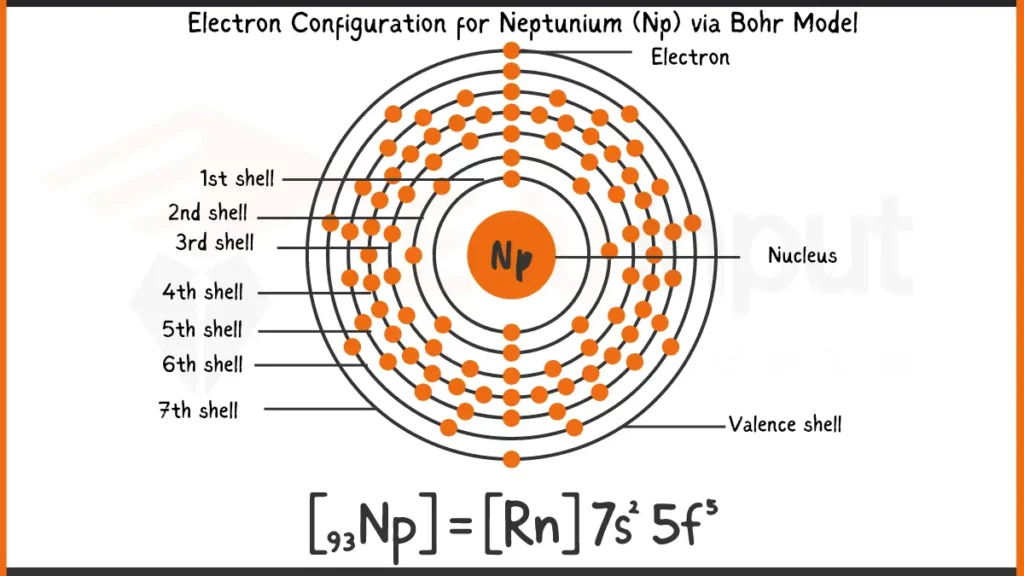
Electronic Configuration of Neptunium via Aufbau Principle
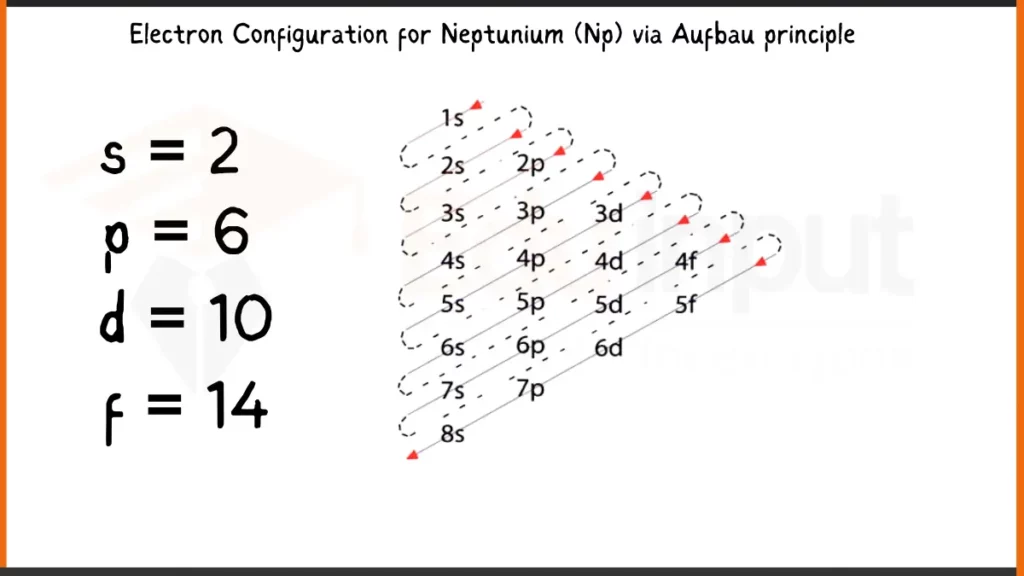
Facts
- Neptunium is named after the planet Neptune, which was discovered eight years earlier.
- It is the first transuranium element to be discovered.
- It is one of the few synthetic elements that has practical uses.
- Neptunium-237 is used in neutron detectors and in nuclear reactors to produce plutonium.
Applications
Neptunium has a few practical uses, mainly in nuclear technology. Neptunium-237 is used in neutron detectors and in nuclear reactors to produce plutonium. It has also been used in experimental nuclear batteries and as a component in some alloys.
Neptunium is a highly reactive and radioactive metal with a few practical uses in nuclear technology. It was the first transuranium element to be discovered and is named after the planet Neptune.

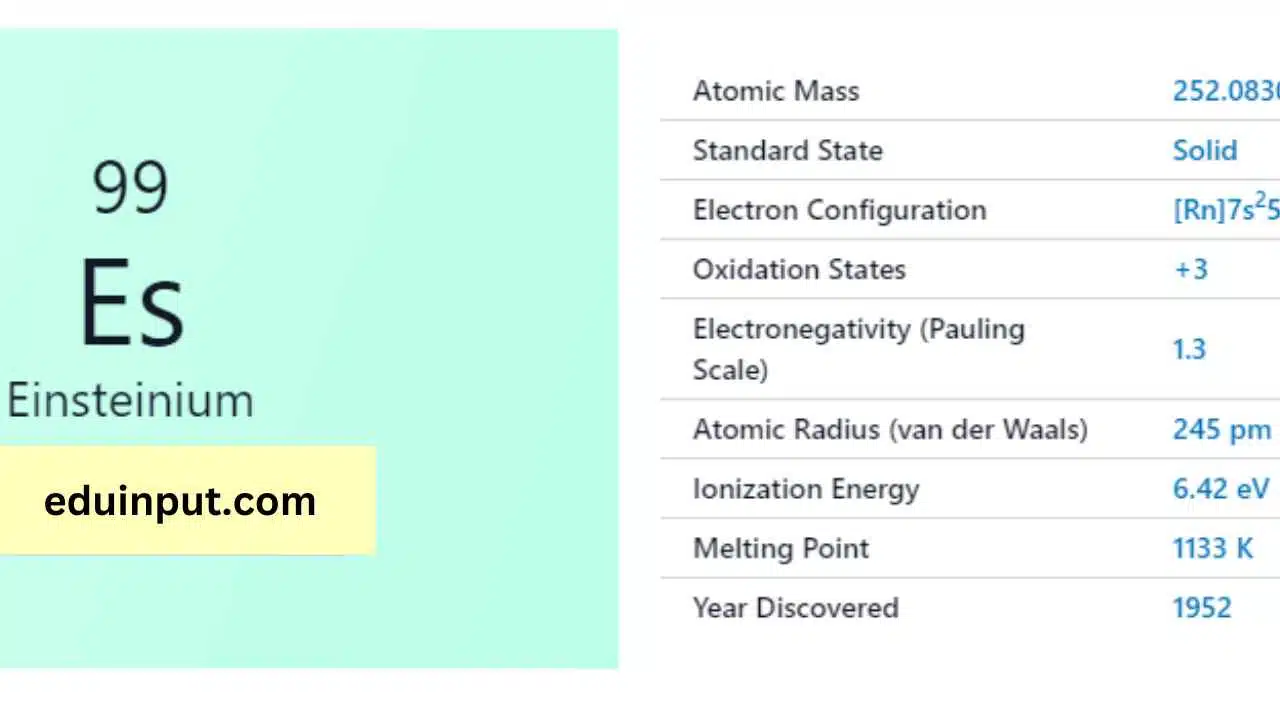

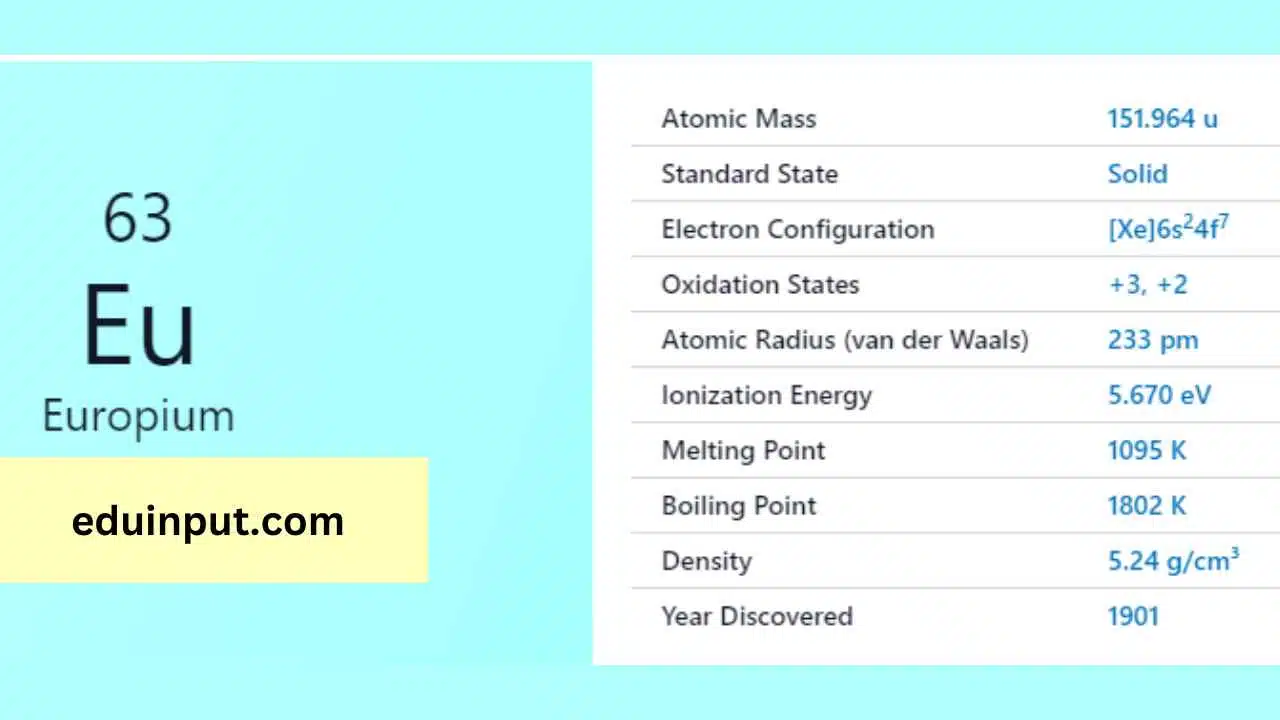


Leave a Reply